Disclaimers: Our site uses demographic data, email opt-ins, display advertising, and affiliate links. Please check out our Terms and Conditions for more information.
When it was announced that the invasive spotted lanternfly was found in Pennsylvania, we got concerned. But the first year these pests came and went without real damage to our crops.
Year two, however, came with an overwhelming abundance of these little pests. Crop damage still remains to be seen, but with the quantity we can safely say this is inevitable given enough time- the volume of lanternflies was truly absurd.
Our home is primarily close to a prime breeding ground for the lanternflies (thanks to our proximity to a natural hillside), and, as it turns out, many of the flowers and crops we grow are these insects' favorite foods.
As the season went on, our house became covered with quite literally hundreds of lantern flies on any given day. Our lemon tree became enveloped with nymphs, we couldn't leave our front door without at least three dive-bombing us, and the trees and plants next to our property had hundreds visibly climbing up each and every day. This is not hyperbole at all- it truly was a spotted lanternfly invasion.
Naturally, as we want our citrus trees, fig trees, grape vines, hibiscus, and others to survive, we went on a mad dash to test as many lanternfly traps and killing mechanisms as we could to see if we could rid ourselves of this pest. So in this one, we wanted to share a bit more about what we tried, what works, what works in some context, and what is our favorite method moving forward.
Note: Most of the methods below were tested primarily on the early nymph stages of spotted lanternflies (black or red-colored), not adults. We will be testing all of these with adults as the season progresses and will add comments over time. We would not be surprised if some of these work on the young nymphs but not adults, or vice versa.
Vinegar and Soap Sprays
One of the first things we read about how to kill lanternflies, specifically lanternfly nymphs, was to spray them with vinegar and/or soapy water. This was an easy first test because we had an abundance of both, plus spray bottles, on hand.
“Killing on contact”, as some sources suggest, feels quite overblown.
We would spray the lanternflies with either bottle (or both), and the lanternflies would hop away like they were unphased. Did they later die in an undisclosed location we could not witness? We can't say there- although the local population of lanternflies kept rising all the same.
The one instance where spraying these did work was when the liquid almost entirely surrounded the lanternfly. This typically happened after squirting them after a few hops (if they didn't hop off our deck, at least), but it also used so much liquid that it felt impractical when it worked. Likewise, we noted that vinegar did kill lanternflies on contact if, and only if, it was sprayed on their underside. So when one hopped to run away and then landed on its back, a quick squirt killed it in seconds- on its top, not so much (that we could tell at least).
One caveat worth noting here is that undiluted vinegar can also kill plants, so we would be hesitant on spraying that directly on any plant material that you want to stay alive. A few squirts on our hibiscus, and the stalks and leaves had obvious damage by the next day.
Overall, I was rather disappointed with this one.
- Want to try this method? You'll need a spray bottle, vinegar, and soap.
Buckets of Soapy Water and Apple Cider Vinegar
Another source we read was that lanternflies are attracted to apple cider vinegar, and putting that plus soapy water into a bucket or cup is an excellent way to trap them. The lanternfly is attracted to the vinegar, jumps in, gets covered in water and soap, and can't escape.
Cue us putting cups of these all around our property, and, to no one's surprise, this did very little. Yes, we did catch some lanternflies. We also caught many other insects we did not intend to catch. Did we catch any appreciable amount to make this one work for us? Not really.
In fact, we simply caught more lantern flies having a big bucket of soapy water (without vinegar) next to our citrus trees at all times. Whenever we would go out and chase them off via other mechanisms on this list, a decent percent would jump to get away, and some would invariably hop right into the soapy water to meet their untimely demise.
The only reason why I kind of like this one is simply because it is a passive activity. Set it up and forget it is better than actively spraying, but the return for the effort is incredibly low.
- Want to try this method? You'll need a bucket, apple cider vinegar, and soap.
- Adding essential oil to soapy water, like Peppermint Oil or Spearmint Oil, is also said to attract lanternflies. We did capture several simply by having a big enough bucket laced with soapy, oiled water, but again was not a lot relative to the overall population.
Neem Oil
Neem oil is another chemical we use in our garden regularly primarily to control aphids on our tomato plants. Like vinegar and soap, Neem oil is suggested to kill lanternflies while (in most cases) not harming the plant the way vinegar does.
Here, the suggestion was also to add soap into the mix when using it for lanternfly control, which I suspect would help with coating the oil on the flies (just speculating, here).
Much like with vinegar and soapy solutions, above, spraying with Neem seemed to have little to no effect after several applications. Similarly, the lanternflies only seemed to die on contact if they were immersed with a sufficient volume of liquid which was few and far between.
The one thing I will say with this one is that the spraying vessel we have for our Neem pumps the liquid through a nozzle at sufficiently high speeds (much higher than a standard squirt bottle). This one did do well at knocking the lanternflies off wherever they were climbing and gave us an extra chance to squish them. That said, that is active work over preventative or passive, so the overall result was still a nominal reduction as far as we could tell.
- Want to try this method? You'll need Neem oil concentrate and a spray bottle. We use a heavy-duty pump-activated sprayer for our crops for aphids.
Sticky Tape
Moving into more physical trapping mechanisms, we have double-sided sticky tape used to trap flies and other pests. These typically are squares or strips that can be cut and shaped as needed with strong adhesive on both sides.
When a lanternfly comes in contact with the tape, it often gets trapped and dies somewhat quickly. Is this one cruel? Perhaps- death is not immediate and they visibly struggle, but we also can't argue with the results as this one simply works.
The tricky part here is placement. At first, I would walk around our deck and whack lanternflies with the tape. Catch and kill success! But that also required time and effort with little return. Instead, I cut the sticky tape and placed them in convenient locations like below and around our fruit trees, on the trunk of the large tree by our house they were climbing up, and strategic places on our deck railing where lanternflies were climbing en masse- successfully catching dozens a day.
The problem with this one is threefold. First, sticky tape has a limited surface area for bugs to get caught on and needs to be frequently replaced. Second, adhesives on these tapes tend to lose their function over time, particularly after periods of rain, so their effectiveness can also be reduced long-term. Third, if you are wrapping sticky tape around a tree trunk, it can come unstuck and fall off over time.
So while this one does work, it is still in the good-not-great category for us.
- Want to try this method? You'll only need to buy sticky tape.
Hand Held Vacuum
Up next, we come to a handheld vacuum. And yes, I bought one designed to suck in bugs because we did not own one. The premise here is you can go around your property, suck up lanternflies, and then dispose of them in a bucket of soapy water where they will promptly drown.
This one only worked for me with some effort and on specific plants with smooth stalks.
The biggest issue is simply that the vacuum I have does not appear to have a high enough suction rate to suck up a lanternfly before it hops away in any difficult placements. If the lanternflies were in high enough concentration, I could get a good number simply by volume. Many would hop away, but I'd still get 50+ in just a few minutes. Throw in any obstacle, like thorns on a citrus tree, and my yield was far lower- they'd sense the vacuum was coming and jump away before I made it close enough.
After that it was just a matter of carefully dumping the lanternflies into a bucket of soapy water where they met their demise (note that some try to jump out and a few can escape depending on how careful you are here). Overall, a pretty effective method assuming you have easily accessible plants with large concentrations of lanternflies on them.
It is worth noting that this method did have good results combined with others on this list, however. When the vacuum got close to the branches of our lemon tree, the lanternflies scattered all over. Invariably some would drop down onto the sticky tape and get caught, while others would jump straight into the bucket of soapy water we have out to dump the vacuum contents in when it got full.
As such, this one did do the job pretty well, but we'd only go as far as saying it helped manage the local population, not eradicate it completely.
- Want to try this method? You'll need a handheld vacuum, a bucket, and soap.
- Note: Most handheld vacuums do not have a great way to close from the inside out. If you do not immediately empty your lanternflies into a bucket of water, they could crawl out. You may need to craft a cap to go over the top of the vacuum to lock them in if you do not empty them immediately (a few pieces of tape worked fine for us).
Milkweed
Milkweed is an interesting one for spotted lanternfly control because the insects are attracted to a plant that will kill them. It is said that the cardiac glycosides in milkweed are toxic to spotted lanternflies (and many other insects, for that matter) but that they are naturally attracted to the plant.
What ends up happening is the spotted lanternflies feed on the plant, ingest toxins, and later perish. (Note: Some sources argue that this doesn't work!)
Coincidentally, we already had milkweed planted on our property and did note a large mass of spotted lanternflies crawling up the plant. That said, as toxins are generally slow in killing insects, it is impossible for us to note whether or not this one has a large enough impact. Since our lanternfly population was increasing despite having milkweed, our best guess is we would need far more planted and spread throughout our property to have any large-scale impact.
Still, killing lanternflies and helping native pollinators in one shot is never a bad thing. It is just a shame we really can't see the results of this one first-hand, so we are torn on whether this is effective or not. So plant this one if you want to help local pollinators, and perhaps you'll get some small benefit in managing lanternflies, too.
- Want to try this method? Simply plant milkweed on your property and let it grow. Even if this one doesn't work, you'll be helping pollinators!
Spotted Lanternfly Traps
Spotted lanternfly traps are, as the name suggests, custom-designed traps designed to capture flies in their natural environment. Typically these involve some form of netting, a bottle, and a bag that is then wrapped around a host tree.
As lanternflies naturally climb trees to reach their food source, some will invariably climb up where the trap is, walk through the setup, and get trapped in the bag on the other side. All you have to do is wait, periodically replace the bags as they fill up, and go on with your life.
Now, you may be thinking, can't the lanternflies walk around the trap and continue up a tree? Or could they also leave the trap given enough effort? Yes, yes they can. But because lanternflies climb host trees in such high volume, invariably many will walk in the path of your trap and get caught. In our particular instance, once they were caught, ants also climbed up into the trap and started to eat the lanternflies- double win!
After purchasing one of these and placing it on the tree that I believed the lanternflies were being attracted to, I have to admit I was shocked at how many I would catch regularly. While still nailing the trap to the tree, I caught 10. A half-hour later, another 50 or so. I'm not quite sure I can say its enough that it made any form of impact on the native population, but it was an appreciable jump from any of the other methods mentioned in this guide so far.
As this one also required the least amount of work compared to all methods mentioned previously, the payoff was decent- even if it didn't fully rid us of our lanternfly issue.
- Want to try this method? While these traps are easy to make DIY with a bit of equipment like a glue gun, premade traps are also for sale online and can be installed relatively quickly. We just used a few extra nails to tack the netting down to our tree as it was not a smooth surface.
Insecticides
Next up, we have the nuclear option- insecticides.
We are generally not fans of spraying insecticides except as a last resort, as it is often hard to get a spray that will only affect its target pest. Since we keep bees, we have to be especially cautious spraying anywhere near our hives as we want our ladies not to be impacted. (Not to mention, some insecticides could also kill plants, too!)
We first tested spraying an “all insect” spray at the front of our house to see if it impacted the numbers (active ingredients d-phenothrin and prallethrin). Much like with the milkweed, we saw no nominal change in the population, no dead lanternflies, and we have to assume that unless this one was slow acting, we saw no local impact.
So we bought a specially formulated spray with deltamethrin as the active ingredient (0.03%), which is claimed to target lanternflies. This one was a night and day difference. We sprayed on a few host trees, our hibiscus plants, inside our trap (above), and around the foundation at the front of our house (taking care not to spray anywhere close to our beehives), and the visible numbers dropped considerably.
The only issue I have with this one is that while the lanternflies dispersed from their usual places, it took a bit of time to see any sort of increase in dead bugs near our plants. So whether this one really killed the bulk of the lanternflies or simply deterred them remains to be seen (I'm going with yes, but again, not 100% sure). Likewise, many reviews suggest this one requires many applications to remain effective, especially after a rain, which is less appealing but makes sense all the same.
- We have also read that insecticides with the active ingredients dinotefuran, imidacloprid, carbaryl, and bifenthrin work, too, but we have not tested these. In reading some scientific literature, many of these likely work better than deltamethrin.
- Want to try this method? Grab spotted lanternfly killer spray.
Remove The Plants They're Attracted To
Finally, we come to a way that is probably a nuclear option for reducing the population of lanternflies on your property- eliminating the plants they're attracted to.
This one has two major issues you can probably think of firsthand. First, you're not killing the lanternflies- just removing potential food sources. Second, for many home gardeners, this is a hard no. Removing a Tree of Heaven may be an easy decision (and hard to do in practice- it spreads!), but getting rid of prized plants in your garden like hibiscus, fig trees, grapevines, and more is often a hard no.
That said, depending on your lanternfly pest problem, some strategic thinning of your foliage could be enough to help control the pest issue to a degree.
In our instance, we have a good idea of where the lanternflies are coming from. Several Tree of Heaven trees can be found on neighboring properties which likely initially attracted them to our area. Our section of the hillside is covered in Japanese knotweed, which they seemingly love, which brings them closer to our house. The closest tree to our property attracts lanternflies in abundance from there, and the branches that grow close to our house are likely a jumping-off point for them to come onto our deck and ultimately reach our plants.
It sounds trivial, but we can literally watch them on a slow migration across our property in that progression. So we got better at cutting back the knotweed further away from our house, trimming branches from the tree, and replacing some decorative potted plants at the front of our house, for example. We have also talked about possibly removing the tree completely, too.
Does this really change the pest population outright? Probably not- they will likely move elsewhere. But could strategic cutting of host plants control the direction they spread? It is possible. Do I feel bad that I may have directed lanternflies to a neighbor's property over ours? Absolutely. But I also cannot control their land, so unless we had a coordinated effort, this one seems unavoidable, too. Then it is up to other methods mentioned in this guide to finish the job when they do make it closer.
Overall, dealing with a spotted lanternfly infestation is not an easy nor pleasant business. Despite testing many popular ways to kill spotted lanternflies, we honestly found that most of them did not work nearly as well as was advertised. Vacuuming them up was great on select plants, but terrible on others. Spraying with vinegar and soap only worked in specific cases. Traps are localized but mostly hands off. And of course, pesticides comes with a wealth of other risks as well.
Despite this, we have started to make progress in killing our local lanternfly population, and every dead lanternfly, no matter the means on how it met its demise, is one less possibility for reproduction and further spread.
So while it may take several of these methods, including removing plants outright, it all works towards the larger goal of eradicating this invasive pest.
Have you figured out a way to trap or kill spotted lanternflies en masse? Comment below to share!

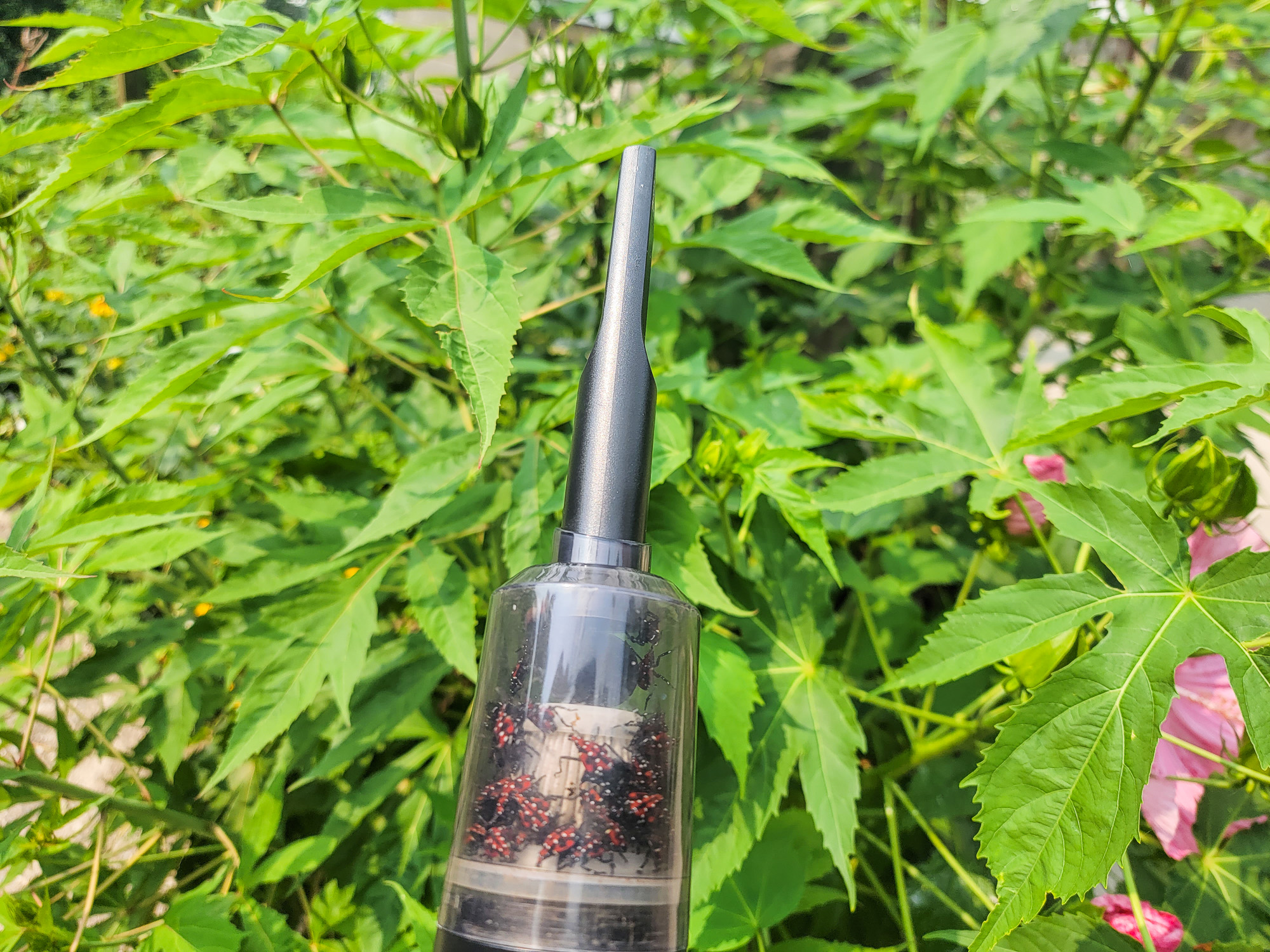
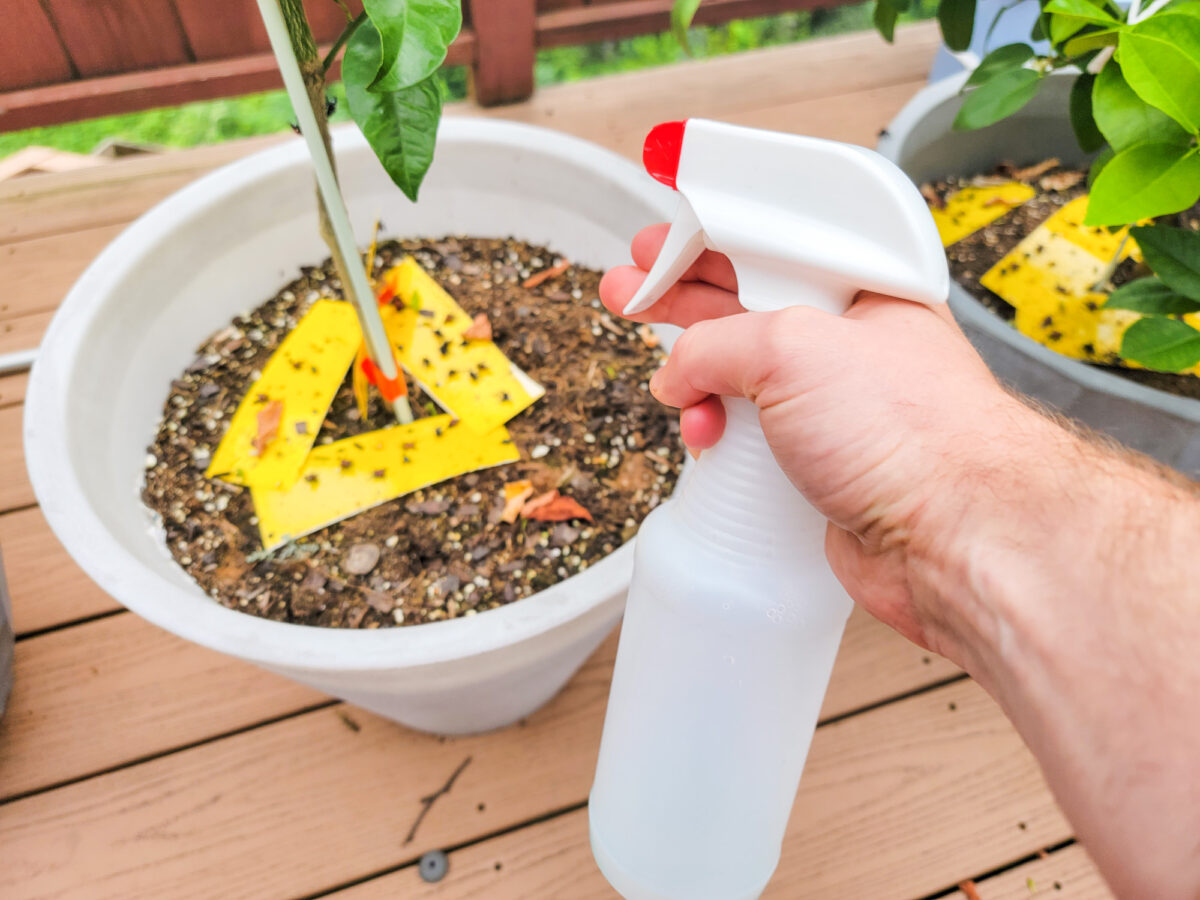
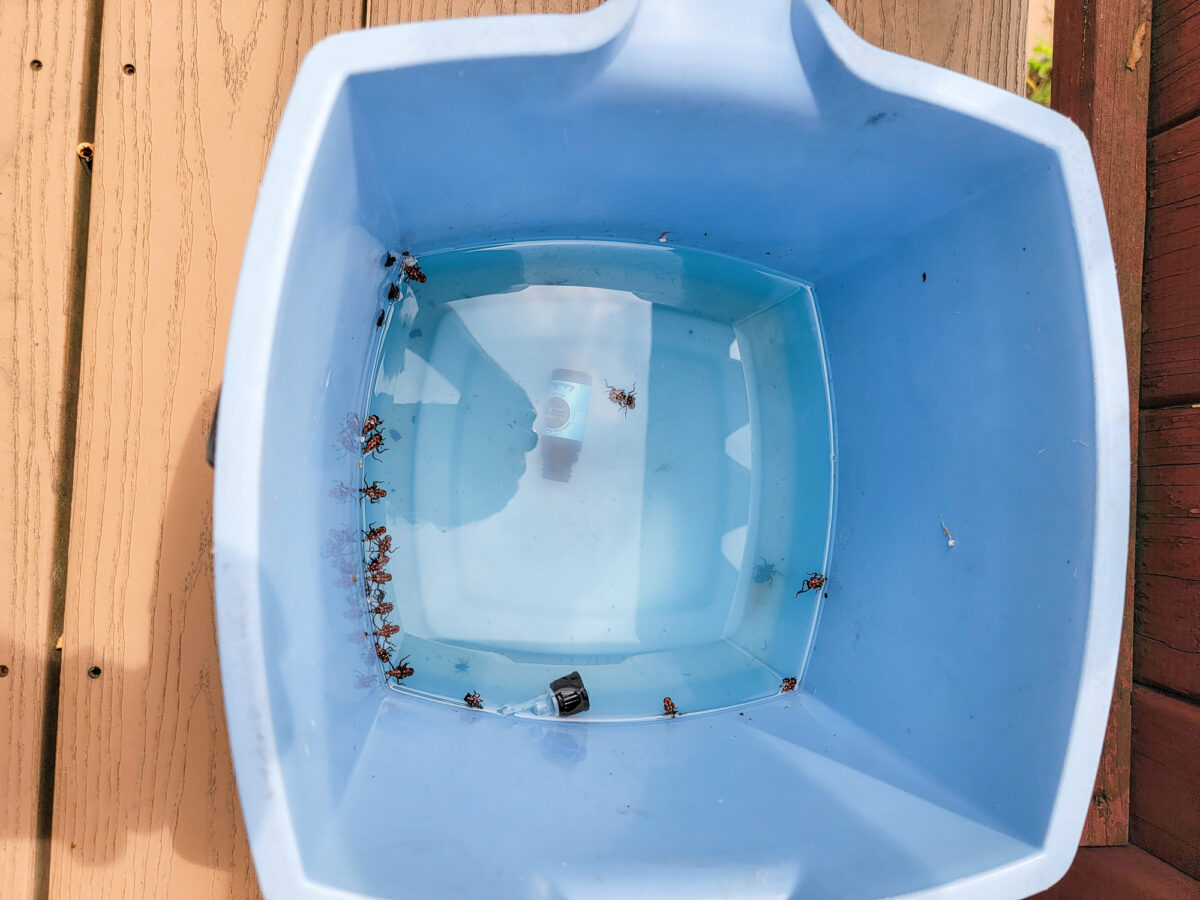
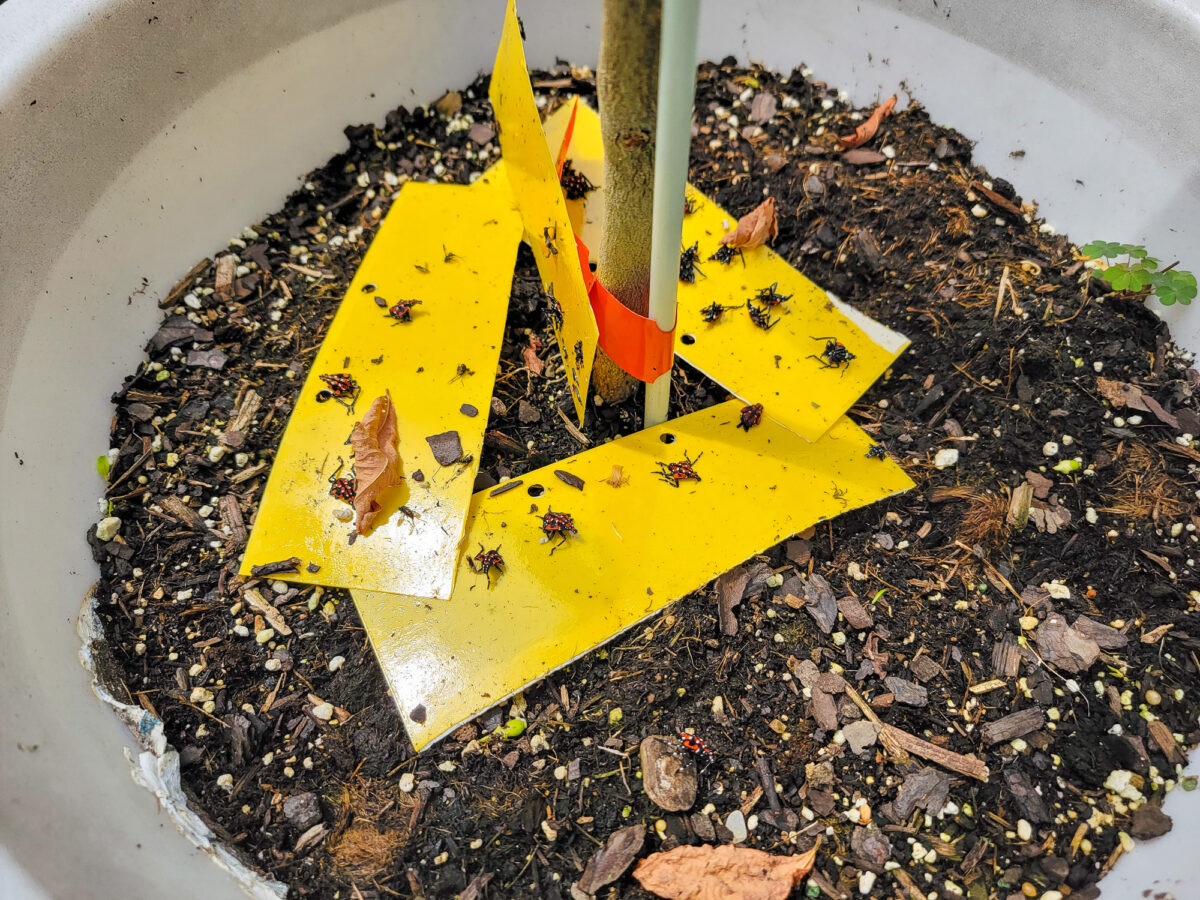
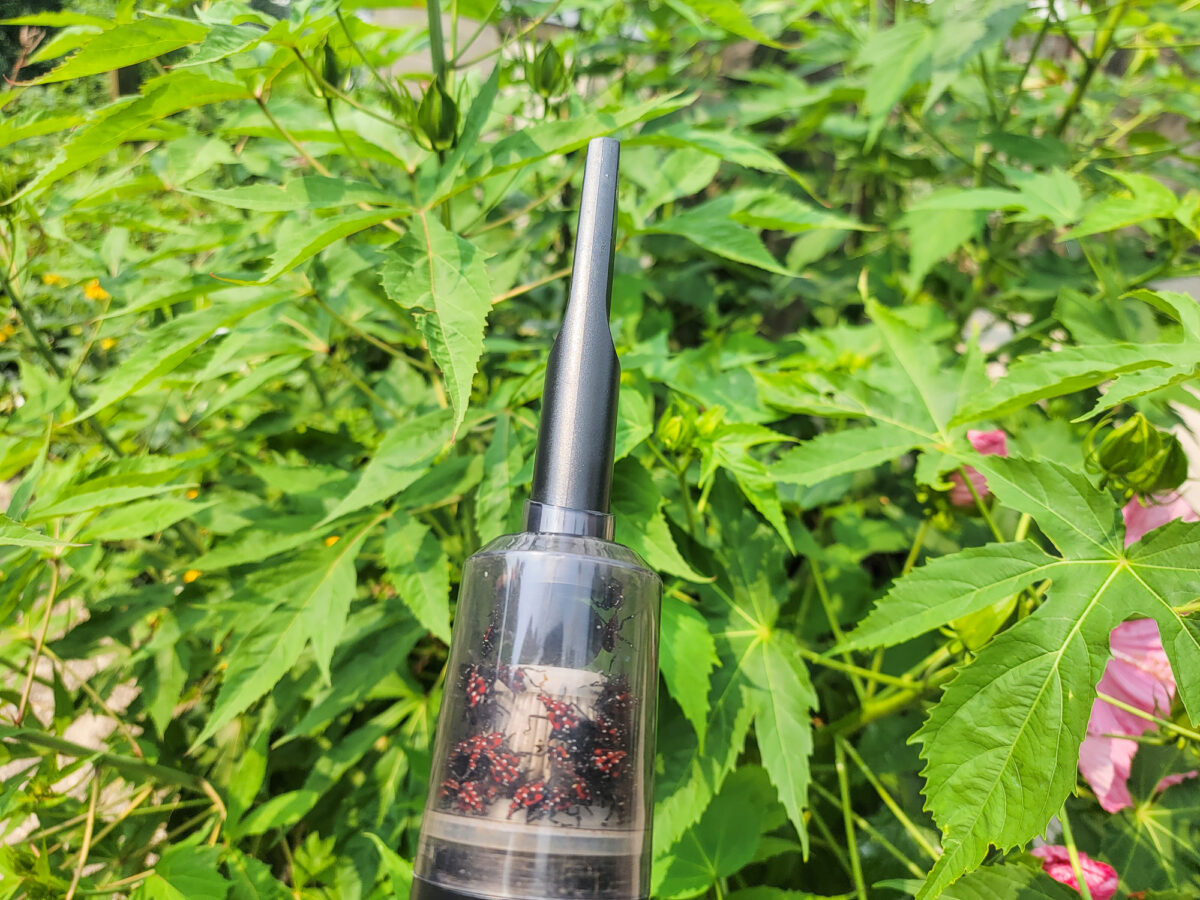
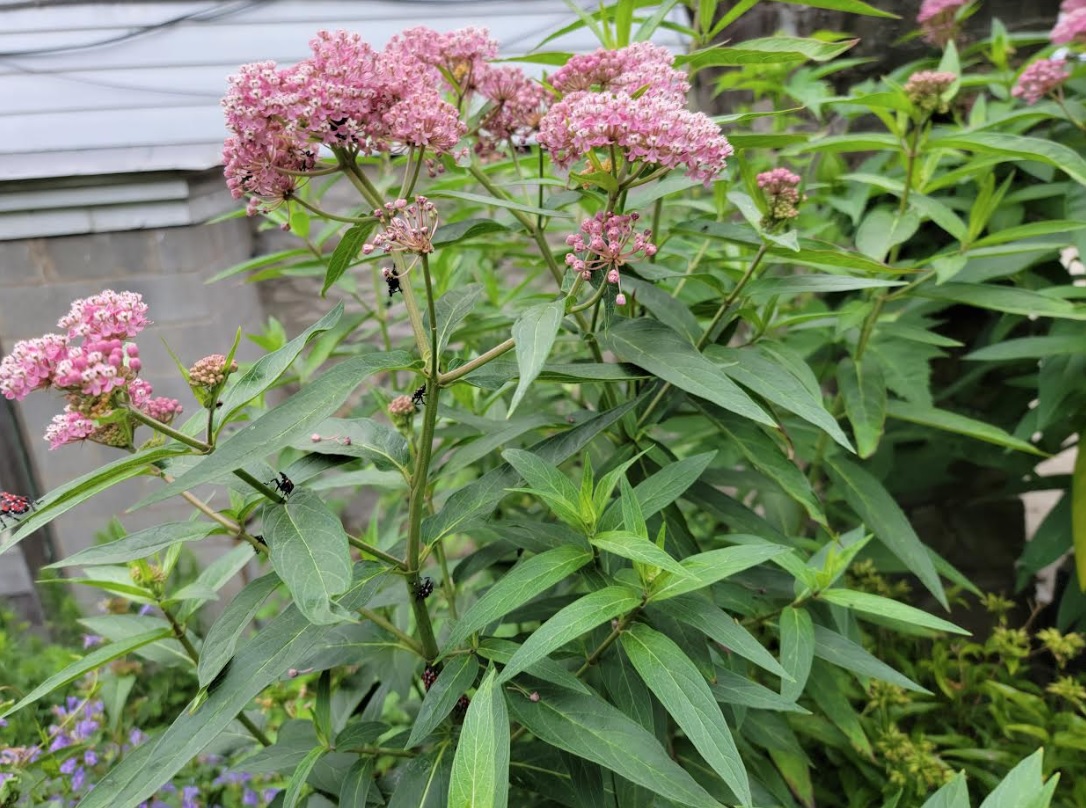

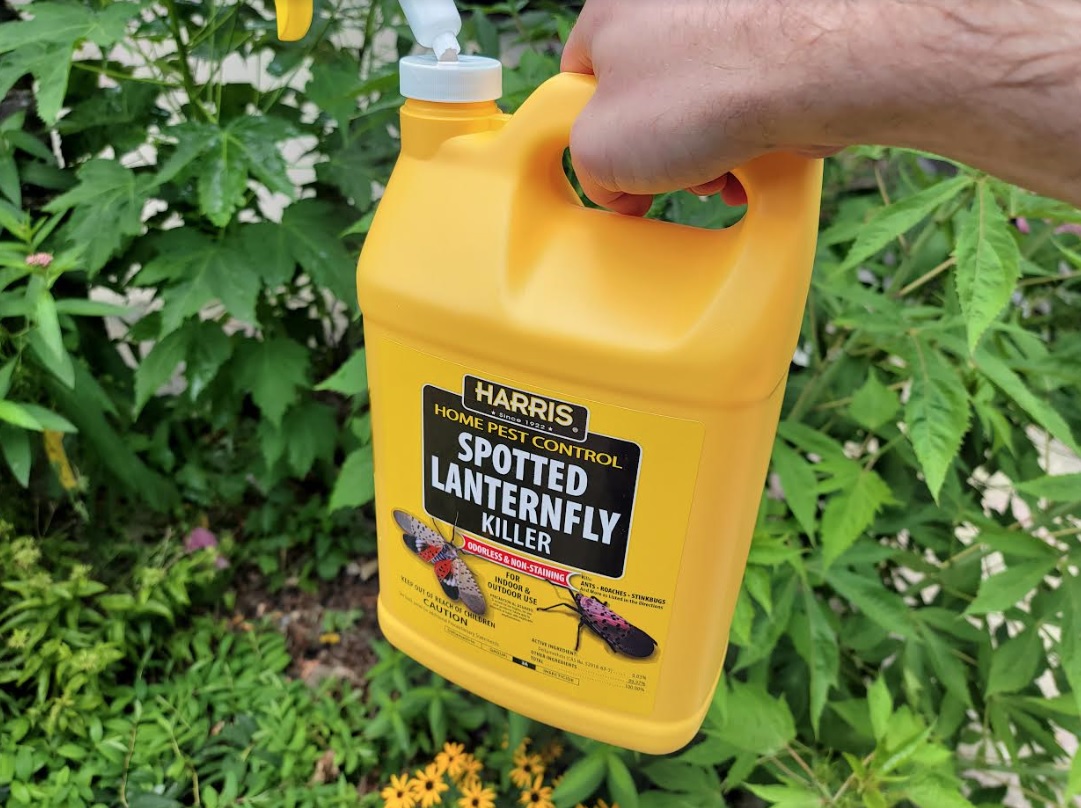
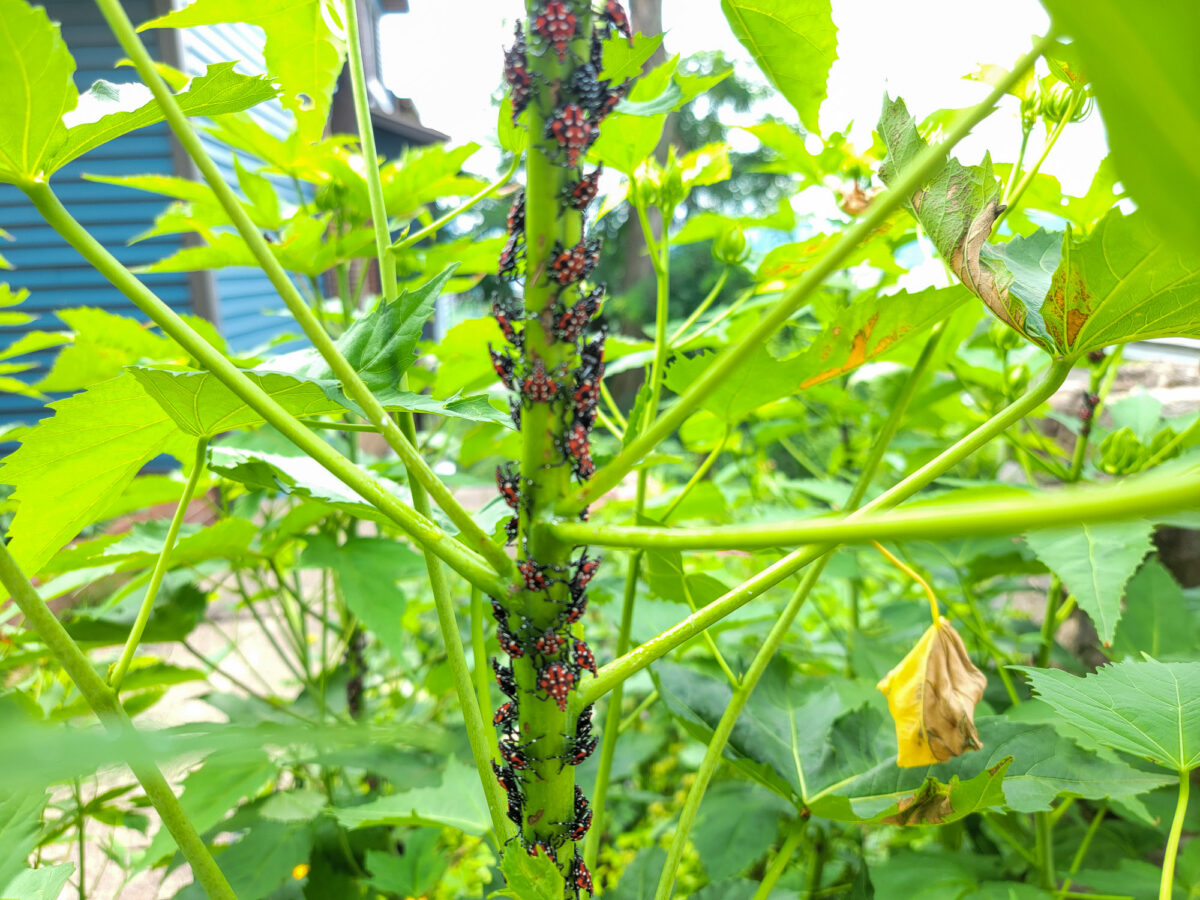
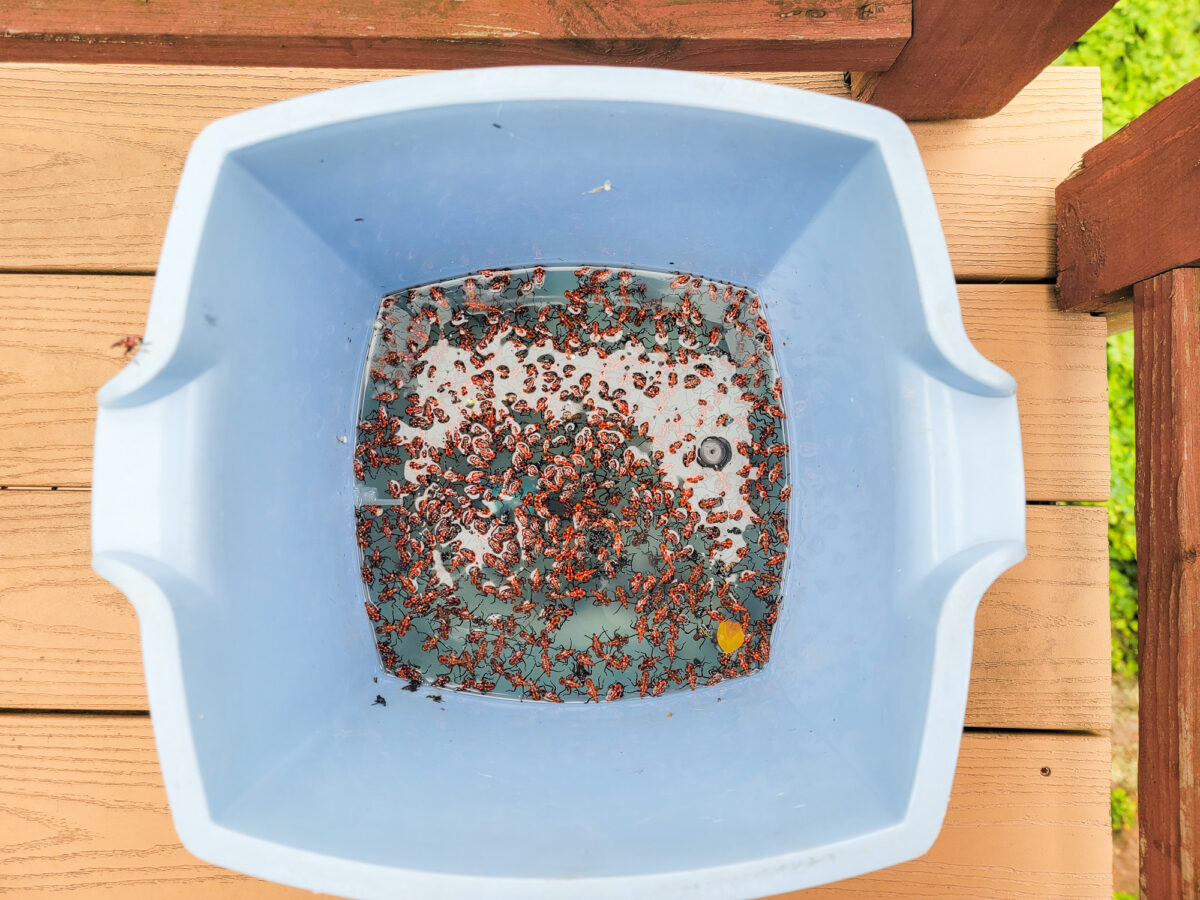
im so sad! really? none of this stuff kills them on contact. Thanks for your report, saved me a bunch of money on car-that does not work
I was rather sad that nothing really was kill on contact. The only time the sprays did that were on the nymphs when I got them to flip upside down and sprayed on their underside for some reason.